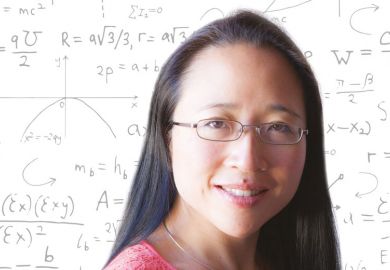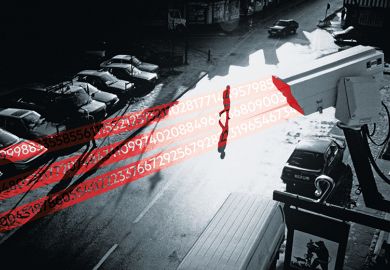For most mathematicians, chalkboards are “their homes, their labs, their private thinking spaces”.
That is the view offered by Jessica Wynne, professor in the photography department at the Fashion Institute of Technology in New York, in her new book Do Not Erase: Mathematicians and Their Chalkboards (Princeton University Press). This includes full-page images of more than 100 chalkboards from Brazil and France as well as right across the US, each accompanied by reflections from the mathematicians. Many offer strong views on why their chalkboards remain an essential tool for thinking, teaching, collaborating – and even making friends.
Simion Filip, associate professor of mathematics at the University of Chicago, sees the blackboard as “an active space, ready to change and willing to carry any thought…With a brief gesture and a sponge, one can modify past thoughts, fix mistakes, and express an improved understanding of a problem.” Although “a lecture on the blackboard goes more slowly than one using slides”, this means that “the audience can absorb the material more deeply. The flow of the lecture is recorded on the surface of the blackboard, and the audience therefore gains an expanded short-term memory.”
Although she admits that she “usually work[s] out [her] geometric problems in [her] mind or on paper”, Dusa McDuff, Helen Lyttle Kimmel ’42 professor of mathematics at Barnard College in New York, regards the blackboard as “essential to [her] teaching”, because “the physical and visual process of writing and drawing diagrams makes the thinking process more concrete and, one hopes, more accessible”.
For Ronen Mukamel, a mathematician and geneticist carrying out research at Harvard Medical School, “The chalkboard provides an antidote to some of the major pitfalls of modern forms of communication. Chalkboard communication naturally occurs at the speed of human thinking, since the presenter must physically write everything that will appear on the board.”
Meanwhile, Philippe Michel, chair in analytic number theory at the Swiss Institute of Technology in Lausanne, sets out the essential tools: a blackboard so tall that “its boundaries do not interrupt the flow of thinking and writing”; some “high-quality chalk”, such as “the legendary Japanese Hagamoro Fulltouch chalk”; “a large cloth wiper” to clean the board, and “a large rubber wiper” to dry it off again.
It is left to Nicholas Vlamis, an assistant professor at Queens College of the City University of New York, to explain why the chalkboard – “the glue that holds together this community and its rituals” – is also central to his social life: “My closest adult friendships have all begun through mathematical collaboration, standing in front of a chalkboard trying to understand, together, some mathematical puzzle. This experience, somehow, leads to friendship; it has been one of the great joys of my life.”
Register to continue
Why register?
- Registration is free and only takes a moment
- Once registered, you can read 3 articles a month
- Sign up for our newsletter
Subscribe
Or subscribe for unlimited access to:
- Unlimited access to news, views, insights & reviews
- Digital editions
- Digital access to THE’s university and college rankings analysis
Already registered or a current subscriber?







